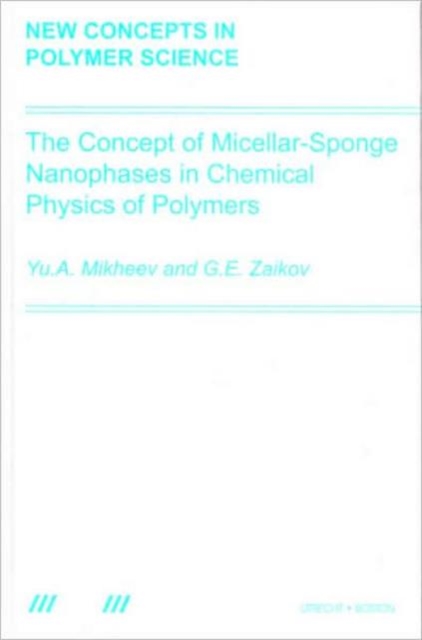
The Concept of Micellar-Sponge Nanophases in Chemical Physics of Polymers Hardback
by Yuri Arsenovich Mikheev, Gennady Zaikov
Hardback
- Information
Description
The monograph is intended for elucidation of the novel trend in chemical physics regarding the polymer non-crystalline phase.
It stresses the physical phenomena affecting the kinetics and mechanism of chemical reactions proceeding in the non-crystalline polymer matrix (NCPM).
NCPM is depicted in terms of a supramolecular (carcass-micellar) model.
The model is thought to reflect heterophase packing of polymeric chains, which co-operate as a molecular-chain sponge.
The NCPM model presented is proved for adequate description of principal structure-physical phenomena to elaborate the scheme of structural-kinetic modeling of chemical reactions in bulky polymers.
Structure-physical phenomena elucidated in the monograph are: - peculiarities of polymer plasticization and polymer blending with liquids; - structural and thermodynamic aspects of sorption of low molecular species; - properties of ESR (spin) probes and optical (molecular) probes; - features of water absorbed by polymers; - mechanical and thermal effects generated by the molecular-chain sponge; - supramolecular aspects of NCPM chemical physics.
This monograph includes the structural-kinetic modeling of complex polymer chemical reactions.
It deals with the problem of mechanism and kinetics of free radical chain reactions using thermal and photochemical model reactions of dibenzoyl peroxide with glassy-like polymers (cellulose triacetate, polycarbonate, polystyrene, polyamide PA-548), viscoelastic polymers (atactic polypropylene, polyamide PA-548, polyethylene, polyisobutylene, melted poly(ethylene oxide), and isotactic polypropylene.
In all cases, the supramolecular heterophase mechanism of the processes, which was unknown for homogeneous systems, was proved.
Furthermore, heterophase mechanisms of photochemical reaction between naphthalene and cellulose triacetate and photolysis of poly(methyl methacrylate) proceeding as a photochain reaction are indicated.
Information
-
Out of StockMore expected soonContact us for further information
- Format:Hardback
- Pages:450 pages
- Publisher:Brill
- Publication Date:01/04/2004
- Category:
- ISBN:9789067644020
Other Formats
- PDF from £315.00
£350.00
£289.10
Information
-
Out of StockMore expected soonContact us for further information
- Format:Hardback
- Pages:450 pages
- Publisher:Brill
- Publication Date:01/04/2004
- Category:
- ISBN:9789067644020